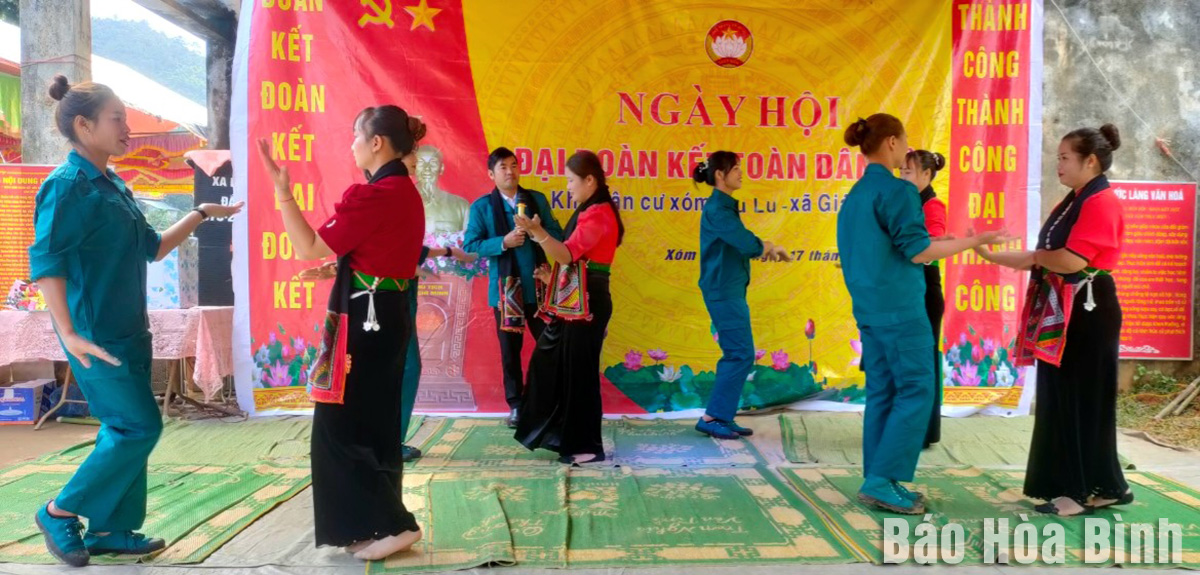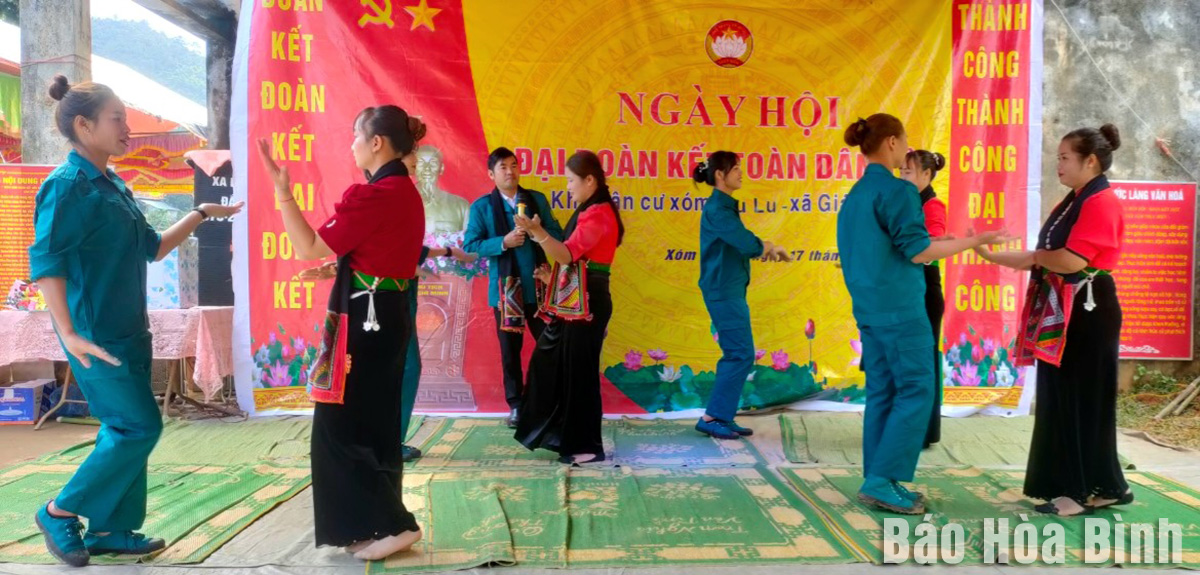
In recent years, based on the community tourism models of the Dao people in Cao Son commune and the Muong people in Hien Luong and Tien Phong communes, the authority of Da Bac district has built a model of this kind in the Tay ethnic community in Thu Lu hamlet, Giap Dat commune.
Although this model is new, with its potential,
available advantages and the response from the people, it promises to create a
new livelihood for the Tay people here.
A dance performance by Thu Lu hamlet’s
art troupe in Giap Dat commune (Da Bac district).
Thu Lu hamlet is 60km from Da Bac district’s
centre. It is home to 69 households of Tay people.Local residents have
preserved their traditional stilt houses, cultural identity, and typical
customs and practices such as language, writing, costumes, traditional weaving,
and rich cuisine of the Tay ethnic people.
In addition, the local natural forest is
preserved with many old trees along with a stream starting from Da Mac
waterfall. These are suitable for trekking and mountain climbing tours.
There are 49 three-room style stilt houses in
the hamlet which were built on large round wooden pillars and covered with palm
roofs, representing the harmony with nature.
Vi Van Luyen in Thu Lu hamlet said he hopes the
traditional cultural identity of the Tay people would open a new direction for
economic development via community tourism. He added that by doing so,
the culture of the Tay ethnic group, which has been preserved for generations,
will also become more popular.
Xa Huu Thuc, Vice Chairman of the Giap Dat
commune People's Committee, expressed the hope that after becoming operational,
the model will help shift the labour structure from agricultural production to
tourism and trade services, creating opportunities for cultural exchange
between visitors and the community, and contributing to raising awareness of
environmental protection and preservation of cultural identity among locals.
In the coming time, the district's People's
Committee will continue to direct relevant agencies to call on potential
investors to invest in community tourism sites in the locality, aiming to
develop the hamlet into an attractive tourist destination for domestic and
international tourists, thus creating jobs, increasing incomes for locals and shifting
the locality’s economic structure.
It will also pay attention to developing a
project for planning and preserving the traditional cultural space of the Tay
ethnic group in connection with tourism development.
Located just a 20-minute drive from Hoa Binh City, Ora Hill Farmstay & Glamping Hoa Binh is a captivating new destination nestled in Mo hamlet, Bình Thanh commune, Cao Phong district. Combining farming with leisure, this tranquil retreat is perfect for those seeking balance, joy, and an immersive experience in the expansive beauty of nature.
Muong Bi - Tan Lac is renowned as one of the four famous Muong regions in Hoa Binh province. Blessed by nature with a favourable climate and stunning landscapes, Tan Lac holds great advantages for tourism development. The local tourism industry has made remarkable strides in recent times thanks to the attention and support from the local authorities and sectors.
With its strategic location, well-developed transport network, and diverse soil and climatic conditions, Hoa Binh is emerging as a must-visit destination in Vietnam's northwestern tourism corridor. The province boasts numerous attractions, including the Kim Boi hot springs (Kim Boi district), the Dau Rong cave complex (Cao Phong), the Mai Chau valley (Mai Chau), and the iconic Hoa Binh hydropower plant.
The northern mountainous province of Hoa Binh has been listed among the 71 most beautiful places to visit worldwide by the prestigious US travel magazine Condé Nast Traveller.
Hoa Binh province’s rich natural and cultural resources position it as a prime location for developing community-based tourism (CBT). In recent years, support from central and provincial policies, as well as assistance from non-governmental organisations, have encouraged local ethnic minority and mountainous communities to actively engage in the sector.



